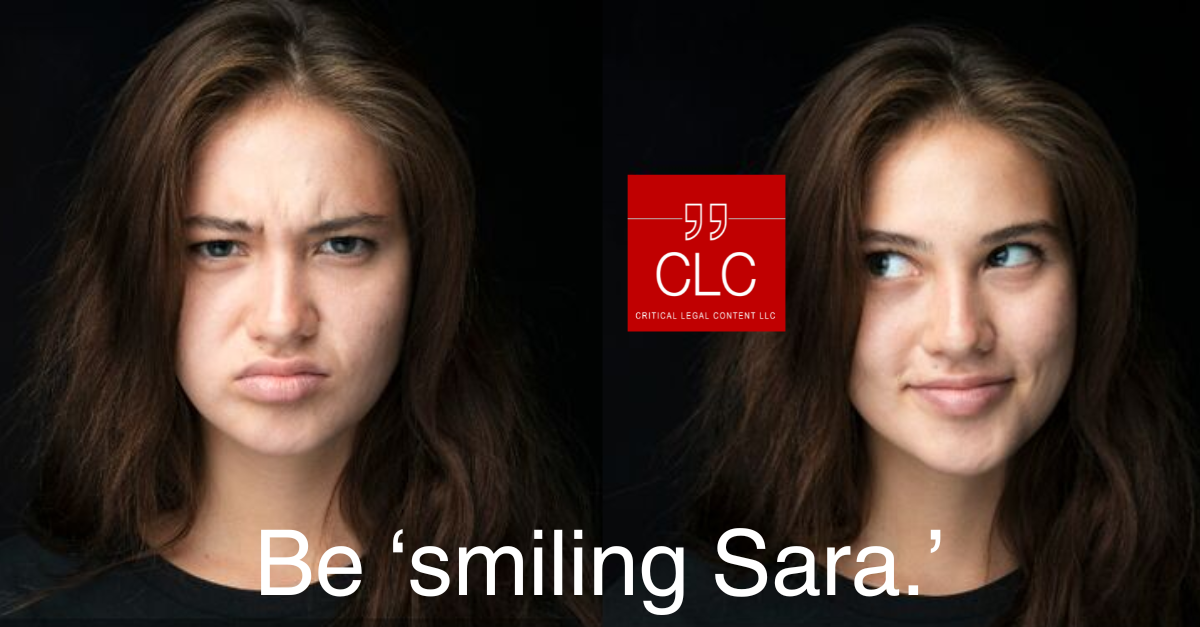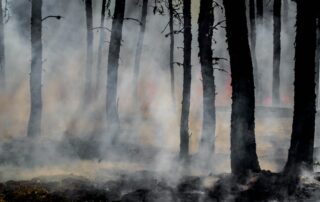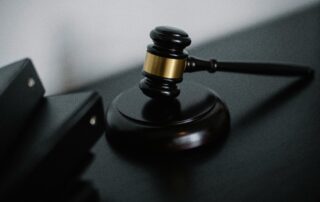Emerging Litigation Podcast
What DEI Changes Mean for Employers Featuring Patice Holland
As political and public scrutiny of Diversity, Equity, and Inclusion (DEI) programs grows, employment attorney Patice Holland of WoodsRogers joins the Emerging Litigation Podcast to explain how employers—especially federal contractors—can reassess DEI initiatives while staying compliant with discrimination laws, navigating shifting enforcement priorities, and managing legal, operational, and reputational risk. Tune in now!
Wildfire Litigation: Building a Case and Establishing Liability with Ed Diab
In this episode of the Emerging Litigation Podcast, you will discover the legal complexities of wildfire litigation as Ed Diab, founding partner of Diab Chambers LLP, unpacks the strategies used to establish liability against utility companies in the wake of Southern California’s devastating January 2025 wildfires. With over 100 lawsuits filed against power providers like Southern California Edison, plaintiffs—including public entities, individuals, and insurers—face an uphill battle proving negligence and inverse condemnation claims. Ed shares insights on case-building strategies, the role of expert investigations, key legal defenses raised by utilities, and the evolving litigation landscape. Tune in for a deep dive into how these high-stakes cases unfold. Don't miss this episode!
Appellate Lawyers at Trial: Don’t Wait Until Your Ox is in the Ditch with Jeff Doss
In this episode of the Emerging Litigation Podcast, you will discover how appellate counsel can strengthen trial strategy and improve post-verdict outcomes in high-stakes cases. Our guest, Jeffrey P. Doss, a partner in the White-Collar Criminal Defense & Corporate Investigations practice group at Lightfoot, Franklin & White LLC, explores their critical role in error preservation, evidentiary challenges, and navigating appeals. Don't miss this episode!
A Shameless Plug for Our Content Services
Your content marketing is everything you’ve ever dreamed of. Right?

Critical Legal Content was founded by Tom Hagy, former Editor & Publisher of Mealey’s Litigation Reports and VP at LexisNexis, founder of HB, current litigation podcaster and editor-in-chief. CLC’s mission is to help smaller firms and service providers not only create content — blogs, articles, papers, webinars, podcasts (like the stuff on this site) — but also to get it out there. How? Via social media, this website, your website, and potential via our podcast and journal which we publish in collaboration with vLex Fastcase and Law Street Media. The goal is to attract readers and dizzy them with your brilliance.
*Inspired by actual events.
Create content like a real legal publisher.
Emerging Litigation Journal
Resolving Business Disputes Without Burning Bridges Featuring Judge Alan Fine on the Emerging Litigation Podcast
In this episode of the Emerging Litigation Podcast, retired Judge Alan Fine of Private Resolutions explores how businesses can resolve disputes without destroying valuable relationships. Drawing on decades of experience on the bench and in commercial litigation, Judge Fine explains the pros and cons of mediation, arbitration, and “private judging,” which allows parties to choose their own judge and resolve matters quickly and confidentially. He shares how aligning your dispute resolution strategy with business objectives—rather than emotions—can preserve partnerships, save time, and achieve fair results.
Insurance Coverage Litigation’s Modern Mayhem with Jeremy Moseley on the Emerging Litigation Podcast
Insurance coverage litigation isn’t what it used to be. In this episode of the Emerging Litigation Podcast, Jeremy Moseley of Spencer Fane unpacks how automation, AI, climate change, and “social inflation” are reshaping risks and fueling high-stakes disputes. From thermonuclear verdicts to dangerous policy gaps, Jeremy offers sharp, practical insights into what insurers, policyholders, and lawyers should expect next.
Federal Courts Issue Contrasting Rulings on AI Training and Copyrighted Books Fair Use
Federal courts in California just issued conflicting rulings on whether training AI models with copyrighted books qualifies as fair use. In Bartz v. Anthropic, the court protected training on lawfully purchased works but rejected the use of pirated copies. In contrast, Kadrey v. Meta allowed AI training on pirated books, calling it “highly transformative.” Tom Hagy explains that with more than 50 similar lawsuits pending, these decisions underscore the legal uncertainty facing tech companies, publishers, and creators—and could reshape the future of AI development and copyright law.
HB Webinars on CeriFi LegalEdge
Catastrophic Wildfires Recovery – Get the Most from Your Insurance Coverage
Take this CLE webinar and gain a better understanding of the complex insurance coverage and remediation issues arising from wildfire disasters, including property damage claims under commercial all-risk and homeowners insurance, valuation provisions like replacement cost and ACV, and time element coverages such as business income loss, civil authority coverage, and additional living expenses. We feature experienced insurance recovery attorneys Dennis Artese, Marshall Gilinsky, and Joshua Gold of Anderson Kill, P.C. Take it now or when you're ready. It's on demand!
Class Action Defense: Key Developments on the Arbitration Front
Gain a better understanding of the key developments on the arbitration front related to class action defense, including the key U.S. Supreme Court rulings shaping the litigation landscape and the main arbitration trends to remain vigilant for on a CLE webinar featuring experienced class action defense attorneys Gerald L. Maatman, Jr. and Eden E. Anderson. Register today!
Trends and Strategies in Wage & Hour Class and Collective Actions
Gain a better understanding of the Fair Labor Standards Act (FLSA) and wage and hour collective actions, get up to date on significant trends and recent key settlements in this area of law, and grasp the main considerations for conditional class certification and decertification and the key collective action rulings handed down in 2023 on a CLE webinar featuring experienced class action defense litigators Gerald L. Maatman, Jr., Jennifer A. Riley, and Greg Tsonis. Sign up today!



























